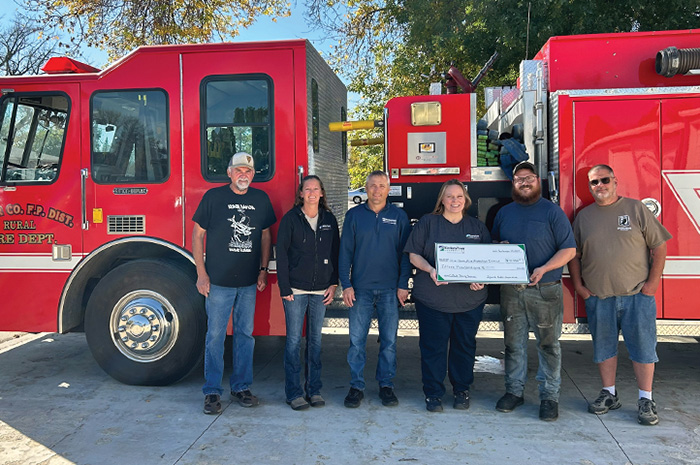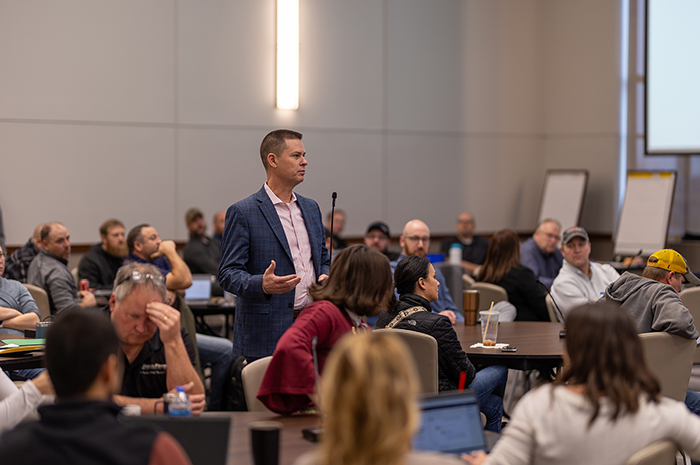Young Station Unit 1 celebrates 50 years
On Nov. 20, Minnkota’s Milton R. Young Station will mark 50 years of generating reliable and affordable electric power for the region.
This month, Unit 1 of Minnkota’s Milton R. Young Station celebrates 50 years of generating electricity for eastern North Dakota and northwestern Minnesota. Young Unit 1 came online on Nov. 20, 1970, and it has been a well-maintained, high-performing source of affordable and reliable power ever since.
To honor five decades of service, Minnkota is reflecting on the history of the Young Station and looking forward to the innovation yet to come.
About the Milton R. Young Station
The Milton R. Young Station is a key source of electrical generation for Minnkota and its members. Named for the late senator from North Dakota, the Young Station is a two-unit, lignite coal-based power plant located near Center, N.D.
Young 1, which began generating electricity in 1970, is owned and operated by Minnkota. It has the capacity to produce 250,000 kilowatts (kW). Young 2, with a 455,000-kW generating capacity, began producing electricity in 1977. It is owned by Square Butte Electric Cooperative and operated by Minnkota. An abundant, low-cost coal supply from the nearby Center Mine, owned and operated by BNI Coal, has played a key role in the plant’s success.
The beginning
Faced with a need for additional power, Minnkota began researching the idea of building an electric generating plant in western North Dakota in 1959. In 1964, officials from Minnkota met with then North Dakota Sen. Milton R. Young to discuss the idea.

A year later, Minnkota applied for a loan through the Rural Electrification Administration (REA) in Washington, D.C. The REA ultimately approved a $56 million loan in 1966, and the blueprints for Milton R. Young Station’s Unit 1 began to take shape.

Young 1
When the Young Station’s Unit 1 came online Nov. 20, 1970, it incorporated many innovations at the time, including a cyclone boiler, allowing it to overcome the challenges of using lignite, a low-Btu, high-moisture and low-sulfur coal. Young 1 consumes approximately 4,400 tons of lignite coal daily, or about 1.5 million tons annually.

To provide cooling water for the facility, Nelson Lake was created in 1968 by a dam built across Square Butte Creek. The plant uses water from Nelson Lake and from the Missouri River for multiple purposes in the power production process. All water used in plant processes is treated and tested to confirm that its quality meets all standards for discharge. Over the years, Nelson Lake has become a popular recreation destination for anglers and event organizers.

Electricity generated by Young 1 flows over a 214-mile, alternating current (AC) 345,000-volt transmission line to the Maple River substation near Fargo, N.D. From that point, it is distributed to a subtransmission system to serve the needs of customers who receive their power from the Minnkota-associated cooperatives.

Young 2
Young 2 began commercial operation May 6, 1977. Known as the Square Butte power project, Young 2 was a concerted effort to meet the growing load requirements of Duluth-based Minnesota Power and the 11 Minnkota member-owner cooperatives.
The construction of Young 2 resulted in the raising of Nelson Dam, which in turn expanded Nelson Lake to 660 surface acres. Young 2 has a net maximum output of 455,000 kW and consumes approximately 8,300 tons of lignite daily, or about 2.8 million tons annually.

Minnkota and the associated cooperatives formed the Square Butte organization to facilitate the project’s financing, and to obtain options for Minnkota to acquire power from the new unit.
For most of its history, energy from Unit 2 was transmitted using the 465-mile Center to Duluth direct current (DC) line. In 2014, Minnkota began delivering Unit 2 power on the 250-mile Center to Grand Forks transmission line.

Environmental upgrades
Minnkota is committed to environmental stewardship and to maintaining 100% compliance with all regulatory requirements. Because of this, the cooperative has invested in several upgrades over the years to maintain the highest levels of environmental performance.
Minnkota made a major investment of more than $425 million in environmental upgrades from 2006 to 2011 at the Young Station. The upgrades resulted in significant reductions in emissions of sulfur dioxide (SO2) and nitrogen oxides (NOX) from both units. Mercury emission controls have since been added to both units as well.
The environmental upgrade also included a complete overhaul of the plant’s electrical support systems and related infrastructure.

Once the upgrades were completed in 2011, plant staff worked throughout the decade to optimize the emission control equipment and reduce operating costs. The investment in the Young Station continues to produce positive results.
Performance and safety milestones
Even after decades of service, the two units at the Young Station have seen some of their best performance in recent years. In 2017, the Young Station generated 5,330,955 net megawatt-hours (MWh) during the year – the second-highest total ever behind 2008’s 5,413,383 MWh. Cumulatively, the units achieved an all-time best availability rating of 95.2% in 2017. So far in 2020, Unit 1 has been available 95.4% of the time, while Unit 2 is achieving 93.9% availability. Both totals are well above industry standards.
In 2019, the Young Station hit another proud milestone when its employees reached 1 million work hours without a lost-time injury. Minnkota continues to promote a culture of safety through active awareness programs and consistent attention to safe work practices, maintaining its role as an industry leader in all aspects of safety.

Project Tundra
Looking to preserve coal-generated electricity in a carbon-managed future, Minnkota has begun researching and evaluating the installation of technologies that would capture carbon dioxide (CO2) emissions from the Young Station – an initiative referred to as Project Tundra. Once captured, the CO2 would be permanently stored in a deep geologic formation more than a mile underground.

State and federal grant support has helped the project advance the Front-End Engineering and Design (FEED) study and significant research into the underground CO2 storage facility. If the project moves ahead, construction would commence in 2022-2023.
For more information on this initiative, visit www.ProjectTundraND.com.
...



